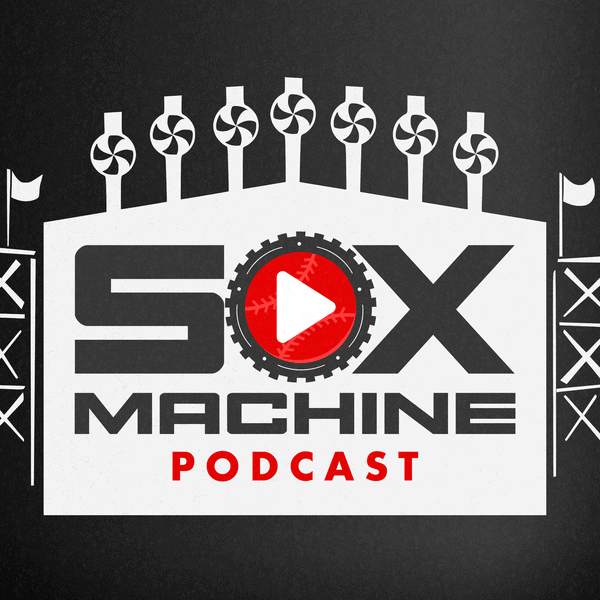Rick Hahn has been involved in four three-team transactions since taking over as general manager prior to the 2013 season. That may not sound like a lot, but three-team deals are fairly infrequent across baseball, and this is actually a high number. These deals have, in the aggregate, worked out in the White Sox favor. One of Hahn's strengths has been the creative usage of a third team to ensure the "fit" necessary to get deals to work on terms agreeable, if not favorable, to the White Sox. Let's take a look back at these trades, in ascending order of "success".
No. 4: Traded Jake Peter to the Los Angeles Dodgers. Received Luis Avilan and cash from the Los Angeles Dodgers and Joakim Soria and cash from the Kansas City Royals.
This, arguably Hahn's least-successful three-team trade, turned out to be a clear win. The magnitude is what puts it in last place. Soria came to the White Sox and gave them excellent relief work. Avilan was quite effective as well. Over the course of the 2018 summer, Hahn was able to trade the pair for Kodi Medeiros, Wilber Perez, and Felix Paulino. Though Medeiros stands out as the top talent in the return, none of the three players has a particularly great chance at becoming an impact player. Still, the Sox effectively turned Peter (who has since floundered) into a noticeably better package of talent. The Sox had to pay Soria and Avilan's salary, but had they not executed this deal, it's logical to assume they would have paid different experienced relievers to do the same.
No. 3: Traded Jake Peavy to the Boston Red Sox. Received Avisail Garcia from the Detroit Tigers and Cleuluis Rondon, Frankie Montas and J.B. Wendelken from the Boston Red Sox.
All in all, there's some reason for all three teams to be frustrated with this mid-2013 move. The Tigers received Jose Iglesias, and his bat never really got off the ground, rendering him a second-division starter (albeit a cheap one) on the strength of his defense. Peavy gave the Red Sox decent pitching down the stretch, but the Red Sox won the division comfortably. He delivered a strong start in the clinching game of the ALDS before imploding in the ALCS and only giving the Red Sox four mediocre innings in a World Series game that was ultimately won by the Cardinals in a battle of the bullpens. Peavy then threw 20 replacement-level starts the following year before getting shipped to the Giants.
Now that we can close the book on Avisail Garcia's White Sox career, we can say definitively that he was a disappointment. His only strong season came in the Sox' first rebuilding year, and he was ultimately not traded while he still had some value. Given the problems with the rest of the roster over his tenure with the team, Garcia certainly didn't de-rail any otherwise competent efforts at contending, but fans were left wanting more.
Even if the centerpiece of the trade was a let-down, the stocking-stuffers came through for the White Sox. Wendelken was half of the package that netted the White Sox Brett Lawrie, while Montas eventually found himself on top-100 prospect lists, allowing him to become the centerpiece of a big trade...
No.2: Traded Micah Johnson, Frankie Montas and Trayce Thompson to the Los Angeles Dodgers. Received Todd Frazier from the Cincinnati Reds.
It's easy to forget how well-regarded Todd Frazier was before the White Sox had acquired him. In a sea of middling talent acquisitions over the Sox' two-year push at contention, Frazier stood out as the 4-WAR impact player that they needed. He fell a little short of those expectations, but as with Garcia before him, there really wasn't much he could do on his own to make the 2016 White Sox a contender. He was productive enough to be included in the mid-2017 deal that netted the Sox Blake Rutherford, and while Frazier made up a small percentage of the value the Sox sent in that deal, it still gives this trade some potential to continue to impact the White Sox in a positive way.
Meanwhile, the pieces Hahn gave up haven't yet led to any regrets. Johnson was predictably a wash-out, and it turns out that Thompson was dealt at the peak of his value. Montas appeared to be finding his footing as a starter in the Oakland A's rotation this past season until he was squeezed by the A's surprising push for contention. He could still come back to haunt the White Sox, but at age 26, it's getting less likely with each passing year.
No.1: Traded Hector Santiago to the Los Angeles Angels of Anaheim and Brandon Jacobs to the Arizona Diamondbacks. Received Adam Eaton from the Arizona Diamondbacks.
The three-way Santiago/Eaton/Mark Trumbo swap remains the greatest move that Rick Hahn has made in his tenure as general manager. Santiago turned in one season of average innings-munching for the Angels and not much else during his four-year White Sox hiatus. In fact, the greatest damage done by this move was Santiago's repeated abuse of White Sox lineups while in other uniforms. The Sox ultimately lost very little.
Meanwhile, Eaton developed into a strong lead-off hitter and by the end of his White Sox tenure, an excellent defensive right-fielder. His stock soared high enough for him to be flipped for Reynaldo Lopez, Lucas Giolito, and Dane Dunning. Hahn's brilliant sale of Santiago has already payed plenty of dividends, and will likely continue to do so in the years to come.
***
These deals are important to keep in mind during the Sox' coming push for contention. Hahn's tenure as general manager hasn't been covered in glory thus far, but creative three-team deals have been a significant strength of his. This could help open up avenues to acquiring trade targets that otherwise seem out of reach, and ultimately increase the amount of options available to the Sox in their quest to take back the AL Central.





